Richmond-area economic development officials say the UCI Road World Championships, an international cycling race, held in the city last year should help them land international business prospects.
They, however, don’t see much benefit in a proposed mega-region linking the Richmond area and Hampton Roads.
Those are just a couple of thoughts that emerged from a roundtable discussion at the offices of Virginia Business in late June.
Participating in the discussion were: Jane Ferrara, chief operating officer of economic and community development for Richmond; Edwin Gaskin, director of economic development for Hanover County; Garrett Hart, director of economic development for Chesterfield County; Barry Matherly, president and CEO of Greater Richmond Partnership; Gary McLaren, executive director of the Henrico County Economic Development Authority; and Mark Kilduff, economic development consultant for New Kent County.
The economic development officials say site selection consultants and representatives from international companies were in town for the race a year ago. The event resulted in the region getting good reviews from business prospects and making it a contender for a number of upcoming projects.
The mega-region idea, however, doesn’t make sense to a pragmatic group of economic development pros.
“At some point, the locality has to get a deal done, and I think when you have these conversations about mega-regions, you lose sight about what are really the nuts and bolts of economic development,” McLaren says.
The following is an edited transcript of the discussion.
Virginia Business: What sort of results have you seen from the international bike race here last September?
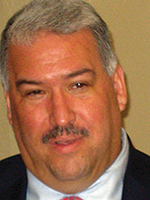 Matherly: We hosted four days’ worth of events for economic development, even bringing people in early. We ended up with four consultants from around the U.S. that attended. We also ended up with companies from Brazil, Germany and South Korea also participating in the activities, and it was probably about 12 people with that delegation … None of the companies have made a commitment yet, but two international companies are in the final stages of a decision. One of the consultants that visited has recommended the Richmond region to several companies, and they are currently in the pipeline. One international company was already a prospect, had not visited the region and could not attend the UCI event. After watching it on TV, they decided to visit and did. We are currently working with them.
Matherly: We hosted four days’ worth of events for economic development, even bringing people in early. We ended up with four consultants from around the U.S. that attended. We also ended up with companies from Brazil, Germany and South Korea also participating in the activities, and it was probably about 12 people with that delegation … None of the companies have made a commitment yet, but two international companies are in the final stages of a decision. One of the consultants that visited has recommended the Richmond region to several companies, and they are currently in the pipeline. One international company was already a prospect, had not visited the region and could not attend the UCI event. After watching it on TV, they decided to visit and did. We are currently working with them.
 Ferrara: The city did host a company that is based in Korea during the bike event and had them join us for the various hospitality venues occurring throughout the event. [A German company also visited the city during the races.] … I’ll have to share you with my favorite story about the race. It was the day that the races began at Lewis Ginter Botanical Gardens … Evidently, there was a lot of traffic so Lewis Ginter was concerned that any tourists in the area might stay away from the gardens that day. So they tweeted out, “Please come to Lewis Ginter. We have plenty of parking. We’d love for you to come and visit us today.” Not long after the tweet, they received a tweet back that said, “Lewis Ginter looks beautiful on TV this morning, and I would love to come and visit; however, I’m in China.” I thought: How do you put a value on that?
Ferrara: The city did host a company that is based in Korea during the bike event and had them join us for the various hospitality venues occurring throughout the event. [A German company also visited the city during the races.] … I’ll have to share you with my favorite story about the race. It was the day that the races began at Lewis Ginter Botanical Gardens … Evidently, there was a lot of traffic so Lewis Ginter was concerned that any tourists in the area might stay away from the gardens that day. So they tweeted out, “Please come to Lewis Ginter. We have plenty of parking. We’d love for you to come and visit us today.” Not long after the tweet, they received a tweet back that said, “Lewis Ginter looks beautiful on TV this morning, and I would love to come and visit; however, I’m in China.” I thought: How do you put a value on that?
Matherly: To her point, that event would be more important to us than the NFL because the markets it picked up were Europe, South America and Asia. Almost 70 percent of our prospects are currently international looking at Richmond. International sporting events are better for us to market this region with than the NFL, NBA and baseball combined, as far as the viewership.
Gaskin: When we are courting international companies our chief challenge is just being known … To have that TV coverage, to have citizens, consumers, business owners, managers, employees say, “Oh, Richmond. That’s where that cycling event was.” That’s priceless. You can’t put a value on that.
McLaren: One of the byproducts of the event in the region was all the first-responder community came together. There was a tremendous amount of planning and incident management planning that frankly had never been done across the spectrum of all the localities in the region. This gave them an opportunity to do that, and I think as a result of that we have a really good model in place and the first-responder community as it relates to working with large events like this. I think that was a very positive outcome.
VB: The state is putting a big emphasis on international trade this year including the creation of a separate agency. What effects do you expect from that?
Matherly: We actually started our own regional export initiative almost three years ago and to our knowledge was the first region in the state to do that … We were able to go to JPMorgan Chase and actually get a grant to pull in VCU and do a study. That study is wrapping up right now … JPMorgan Chase is interested in funding part of that implementation just for this region and the state is interested in partnering with us on that. So we might be a model region for regional export initiatives, but we really see that more to help existing businesses expand their overseas markets than actually as an attraction [of new businesses].
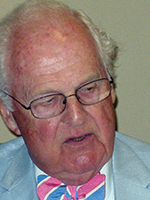 Kilduff: I think export promotion is a legitimate function of government, but it’s much more of an educational function than an economic development function. I don’t mean that it won’t cause an improved economy because it certainly can, but … the bottom line to me is: If you put a million dollars into [a new state agency] or a million dollars into marketing attraction, which produces more long-term benefit for the commonwealth? … I think if you put a million bucks into true marketing attraction, finding new projects for the commonwealth, you’ll come out much better.
Kilduff: I think export promotion is a legitimate function of government, but it’s much more of an educational function than an economic development function. I don’t mean that it won’t cause an improved economy because it certainly can, but … the bottom line to me is: If you put a million dollars into [a new state agency] or a million dollars into marketing attraction, which produces more long-term benefit for the commonwealth? … I think if you put a million bucks into true marketing attraction, finding new projects for the commonwealth, you’ll come out much better.
McLaren: I tend to agree with Mark. I think [exporting is] an important function … I do think that some of the current trade programs promotions and programs are very effective at educating and networking these companies with the right resources … There’s a short-term and a long-term value. When you locate a facility that employs 50 to 100 people, that’s a long-term, year-after-year benefit that’s really important. Like in most cases, it comes down to there’s a scarce number of resources and where are you going to best employ those resources in my mind.
VB: It sounds like you wouldn’t have voted for the separate agency. Is that correct?
Kilduff: Yeah, I would not have voted that way.
McLaren: Agreed.
VB: One of our recent cover stories was about a proposed mega-region between Richmond and Hampton Roads. [The reasoning behind mega-regions is] that people and businesses will migrate to large population centers over the next two decades. Do you think a mega-region between Richmond and Hampton Roads would help or hinder economic development?
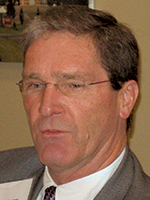 McLaren: What does it mean? Obviously, you’ve already got the Golden Crescent that’s basically coming together from Northern Virginia to Richmond to Hampton Roads. That’s where most of the population in the state lives already, but I don’t know what a mega-region is … I know that, to land a project, you’ve got to have a local economic development organization that has product in place, that has answers to the key location questions — access to market, labor force, operating cost — and you’ve got to have product that that the company is looking for … At some point, the locality has to get a deal done, and I think, when you have these kind of conversations about mega-regions, you lose sight of what are really the nuts and bolts of economic development …
McLaren: What does it mean? Obviously, you’ve already got the Golden Crescent that’s basically coming together from Northern Virginia to Richmond to Hampton Roads. That’s where most of the population in the state lives already, but I don’t know what a mega-region is … I know that, to land a project, you’ve got to have a local economic development organization that has product in place, that has answers to the key location questions — access to market, labor force, operating cost — and you’ve got to have product that that the company is looking for … At some point, the locality has to get a deal done, and I think, when you have these kind of conversations about mega-regions, you lose sight of what are really the nuts and bolts of economic development …
Kilduff: I’d like to build on Gary’s point. I’m a firm believer that economic development is regional. The things a prospect is looking for — whether it’s labor or transportation, markets or services that would be provided — are regional … If you just took labor, I don’t think it’s reasonable to think that a labor market stretches from Virginia Beach to Goochland. I think regional [size] is important, but the size we’ve got right now maybe is all you want to say grace over.
Hart: Who are you trying to compete with when [you create a mega-region]? Do you think you’re going to be Shanghai? … We look at the Hampton Roads market because we compete against it. We look at the unique opportunities in our market, in our region, and they’re different in a way.
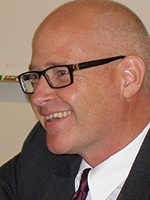 Gaskin: Definitely stuck in a room of pragmatists not philosophers. [While] a mega-region is philosophically interesting … here we have a regional, collaborative group that, for all the fussing we sometimes do to each other, has multiple decades of success. It is highly functional, yet some days it feels like we’re barely keeping it together. To make that bigger is hard to really contemplate. It doesn’t make sense.
Gaskin: Definitely stuck in a room of pragmatists not philosophers. [While] a mega-region is philosophically interesting … here we have a regional, collaborative group that, for all the fussing we sometimes do to each other, has multiple decades of success. It is highly functional, yet some days it feels like we’re barely keeping it together. To make that bigger is hard to really contemplate. It doesn’t make sense.
Hart: Improved transportation link-ins between the Hampton Roads area and Richmond is a good thing. Working together with the universities in that area and our universities is a great thing. The interchange of knowledge and information is a great thing. The populations of both of the regions will grow, and we may become a mega-region [sometime in the future]. We are pragmatists. We look at: Can we get [goods] from the port quicker? Can we get a specialized labor out of Hampton Roads up here faster? Can we get our goods down there quicker? We look at what things we can do to make us act more efficiently on a regional or a greater regional basis. The idea of saying it’s a mega-region doesn’t change anything for us.
Matherly: I think you have two distinct regions. Regions are defined by certain economic characteristics, and you can’t just brush over those … We could collaborate a lot more with the Hampton Roads region, and that is different. It’s two different regions deciding that it’s best if they work together … We’ve got something good that’s working here, but I think as a growing region maybe it’s our turn to step out and build some collaborations with other regions [including Hampton Roads, Charlottesville and Northern Virginia].
VB: Let’s talk for a moment about economic development incentives. There’s been some criticism lately about the use of them. Should there be reform? Should there be a limit to incentives?
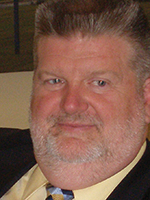 Hart: I think there’s somewhat a misperception about incentives. We just don’t go and say, “Well, let’s just throw a bunch of money at it.” We have a formula, and it’s not a formula I’m going to share with any of my friends in here. I know how we do our math to determine what the incentive package is going to be. We have performance agreements that ensure that we’re going to get what we’re supposed to get so that my return on investment is exactly what I tell the board it’s going to be. It’s a business decision. It’s not, “Let’s roll the dice and see what happens.” …
Hart: I think there’s somewhat a misperception about incentives. We just don’t go and say, “Well, let’s just throw a bunch of money at it.” We have a formula, and it’s not a formula I’m going to share with any of my friends in here. I know how we do our math to determine what the incentive package is going to be. We have performance agreements that ensure that we’re going to get what we’re supposed to get so that my return on investment is exactly what I tell the board it’s going to be. It’s a business decision. It’s not, “Let’s roll the dice and see what happens.” …
In most cases, you’re actually working with the company to make sure that the deal works. Everybody is participating as a team, and we’re covering some of the external costs of labor, recruitment or training. Things that make a move costly, we’re helping with that … At the end of the day, if we don’t do it, our competition does do it.
Ferrara: You can look at an incentive as really an investment by the locality, and there’s a return on investment. You invest in order to create a long-term revenue stream in your locality. I agree with my comrades here that, if we want to be competitive, we have to be in the incentives game, but we have to be smart about how we offer those incentives and how we structure them. There’s accountability on the part of the company to do what they say they’re going to do, and if they don’t, these performance agreements have provisions where those incentives are paid back.
McLaren: JLARC [the Joint Legislative Audit & Review Commission] did a study on incentives across Virginia and basically JLARC’s conclusion was they’re working pretty well in Virginia.
Gaskin: That doesn’t mean there won’t be failures. That doesn’t mean that some companies won’t fail or do some things that in retrospect look suspect.
Kilduff: You’ve got to limit your exposure to failure … One of the ways you limit that is in that performance agreement. What a performance agreement means is: You perform, and then we deliver the goods. The building has to be built or refurbished. The jobs have to be created and then you get paid. That’s the best way of doing it that there is.
VB: Let’s talk a little bit about the inventory of sites. How much does the locality need to prepare a site even before you have the prospect? How much of an investment do you need to make?
McLaren: I started in this business a long time ago. Those are the days when literally you could have a relationship with the project that could last two years. You could show somebody a cornfield on the edge of town that was close enough to water and sewer that they’d work with you … That’s a laughable scenario today. Somebody’s going to be looking at you on your website, and if they haven’t determined by looking at your website that you have product enough to interest them or a site well enough along to interest them, you’re never even going to know they were looking at you. Much of the site selection process today is different. We’ve gone from a selection process to an elimination process in terms of site selection. A [business prospect] has a check list, and they’ve got different parameters based on quality of labor, quantity of labor, site, utilities, tax structure, utility costs — all of those things are on a spreadsheet. They’ve got a matrix they’re going through, trying to eliminate as many communities and states as quickly as they can to get down to three maybe five sites that then they begin to negotiate with. If you don’t have your ducks in a row, you give them an opportunity to eliminate you.
Ferrara: Along those lines, the top three [issues] in my mind are: time, money and risk. If you don’t have a site that’s ready to go, it’s going to take more time, it’s going to cost more money, and there’s risk associated with the unknown. The more you can eliminate that and create some predictability in the mind of a consultant or a company, the more competitive you’re going to be.
Hart: The site selection process used to be six months or so … Now you’ve got 90 days to figure out where [the business will be located], and then they’ve got nine months to get it under production … They’re going to hit the market in a year, and if you don’t have sites that are ready to go, then you are not playing in that game.
McLaren: We’re talking about sites here, but that’s probably a pretty small percentage of the projects that we are looking at. Most of the projects we are looking at are looking for an existing building.
Matherly: Gary is absolutely right; 80 percent of our prospects want buildings, not sites… One negative outcome of our success in this region is that a lot of those buildings that were vacated during the Great Recession are all full now. We’ve been burning through an inventory of existing buildings with each success, and we’re to a point now where we look out there, and we do not have a lot of modern buildings … We need more modern shell buildings up and being built. Certain regions we are competing against might have nine or 10 shell buildings up at a time, and we’re lucky to have one up at any given time.


 Matherly: We hosted four days’ worth of events for economic development, even bringing people in early. We ended up with four consultants from around the U.S. that attended. We also ended up with companies from Brazil, Germany and South Korea also participating in the activities, and it was probably about 12 people with that delegation … None of the companies have made a commitment yet, but two international companies are in the final stages of a decision. One of the consultants that visited has recommended the Richmond region to several companies, and they are currently in the pipeline. One international company was already a prospect, had not visited the region and could not attend the UCI event. After watching it on TV, they decided to visit and did. We are currently working with them.
Matherly: We hosted four days’ worth of events for economic development, even bringing people in early. We ended up with four consultants from around the U.S. that attended. We also ended up with companies from Brazil, Germany and South Korea also participating in the activities, and it was probably about 12 people with that delegation … None of the companies have made a commitment yet, but two international companies are in the final stages of a decision. One of the consultants that visited has recommended the Richmond region to several companies, and they are currently in the pipeline. One international company was already a prospect, had not visited the region and could not attend the UCI event. After watching it on TV, they decided to visit and did. We are currently working with them. Ferrara: The city did host a company that is based in Korea during the bike event and had them join us for the various hospitality venues occurring throughout the event. [A German company also visited the city during the races.] … I’ll have to share you with my favorite story about the race. It was the day that the races began at Lewis Ginter Botanical Gardens … Evidently, there was a lot of traffic so Lewis Ginter was concerned that any tourists in the area might stay away from the gardens that day. So they tweeted out, “Please come to Lewis Ginter. We have plenty of parking. We’d love for you to come and visit us today.” Not long after the tweet, they received a tweet back that said, “Lewis Ginter looks beautiful on TV this morning, and I would love to come and visit; however, I’m in China.” I thought: How do you put a value on that?
Ferrara: The city did host a company that is based in Korea during the bike event and had them join us for the various hospitality venues occurring throughout the event. [A German company also visited the city during the races.] … I’ll have to share you with my favorite story about the race. It was the day that the races began at Lewis Ginter Botanical Gardens … Evidently, there was a lot of traffic so Lewis Ginter was concerned that any tourists in the area might stay away from the gardens that day. So they tweeted out, “Please come to Lewis Ginter. We have plenty of parking. We’d love for you to come and visit us today.” Not long after the tweet, they received a tweet back that said, “Lewis Ginter looks beautiful on TV this morning, and I would love to come and visit; however, I’m in China.” I thought: How do you put a value on that? Kilduff: I think export promotion is a legitimate function of government, but it’s much more of an educational function than an economic development function. I don’t mean that it won’t cause an improved economy because it certainly can, but … the bottom line to me is: If you put a million dollars into [a new state agency] or a million dollars into marketing attraction, which produces more long-term benefit for the commonwealth? … I think if you put a million bucks into true marketing attraction, finding new projects for the commonwealth, you’ll come out much better.
Kilduff: I think export promotion is a legitimate function of government, but it’s much more of an educational function than an economic development function. I don’t mean that it won’t cause an improved economy because it certainly can, but … the bottom line to me is: If you put a million dollars into [a new state agency] or a million dollars into marketing attraction, which produces more long-term benefit for the commonwealth? … I think if you put a million bucks into true marketing attraction, finding new projects for the commonwealth, you’ll come out much better.  McLaren: What does it mean? Obviously, you’ve already got the Golden Crescent that’s basically coming together from Northern Virginia to Richmond to Hampton Roads. That’s where most of the population in the state lives already, but I don’t know what a mega-region is … I know that, to land a project, you’ve got to have a local economic development organization that has product in place, that has answers to the key location questions — access to market, labor force, operating cost — and you’ve got to have product that that the company is looking for … At some point, the locality has to get a deal done, and I think, when you have these kind of conversations about mega-regions, you lose sight of what are really the nuts and bolts of economic development …
McLaren: What does it mean? Obviously, you’ve already got the Golden Crescent that’s basically coming together from Northern Virginia to Richmond to Hampton Roads. That’s where most of the population in the state lives already, but I don’t know what a mega-region is … I know that, to land a project, you’ve got to have a local economic development organization that has product in place, that has answers to the key location questions — access to market, labor force, operating cost — and you’ve got to have product that that the company is looking for … At some point, the locality has to get a deal done, and I think, when you have these kind of conversations about mega-regions, you lose sight of what are really the nuts and bolts of economic development … Gaskin: Definitely stuck in a room of pragmatists not philosophers. [While] a mega-region is philosophically interesting … here we have a regional, collaborative group that, for all the fussing we sometimes do to each other, has multiple decades of success. It is highly functional, yet some days it feels like we’re barely keeping it together. To make that bigger is hard to really contemplate. It doesn’t make sense.
Gaskin: Definitely stuck in a room of pragmatists not philosophers. [While] a mega-region is philosophically interesting … here we have a regional, collaborative group that, for all the fussing we sometimes do to each other, has multiple decades of success. It is highly functional, yet some days it feels like we’re barely keeping it together. To make that bigger is hard to really contemplate. It doesn’t make sense. Hart: I think there’s somewhat a misperception about incentives. We just don’t go and say, “Well, let’s just throw a bunch of money at it.” We have a formula, and it’s not a formula I’m going to share with any of my friends in here. I know how we do our math to determine what the incentive package is going to be. We have performance agreements that ensure that we’re going to get what we’re supposed to get so that my return on investment is exactly what I tell the board it’s going to be. It’s a business decision. It’s not, “Let’s roll the dice and see what happens.” …
Hart: I think there’s somewhat a misperception about incentives. We just don’t go and say, “Well, let’s just throw a bunch of money at it.” We have a formula, and it’s not a formula I’m going to share with any of my friends in here. I know how we do our math to determine what the incentive package is going to be. We have performance agreements that ensure that we’re going to get what we’re supposed to get so that my return on investment is exactly what I tell the board it’s going to be. It’s a business decision. It’s not, “Let’s roll the dice and see what happens.” …